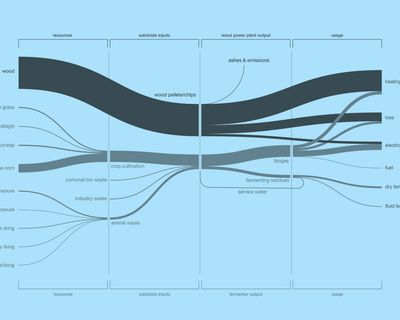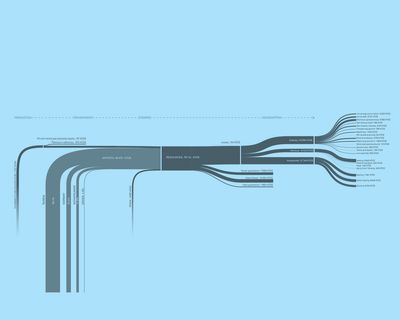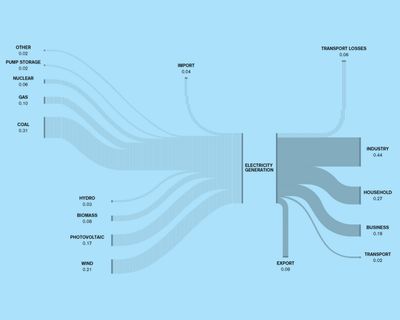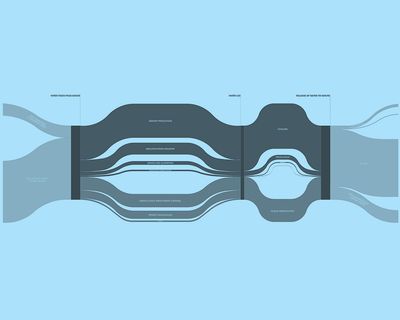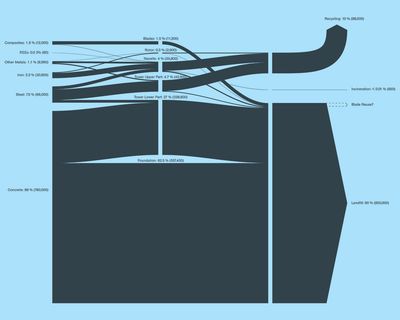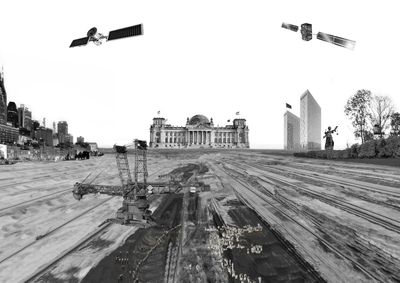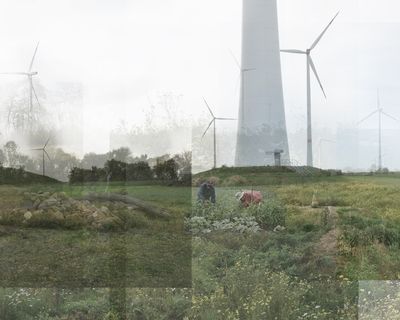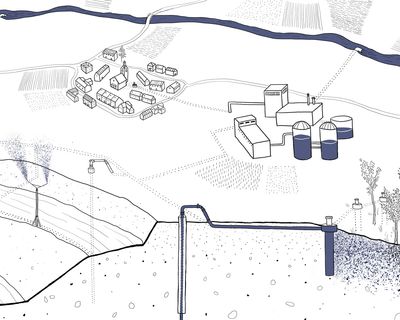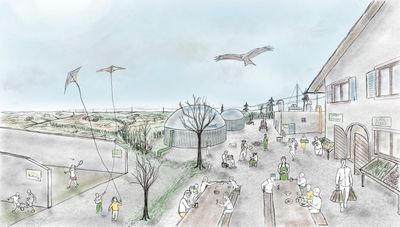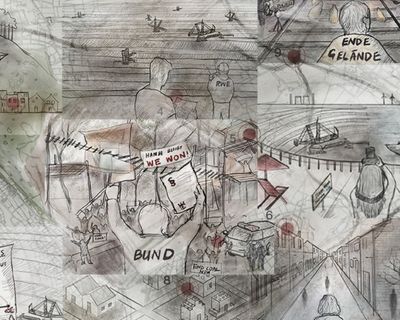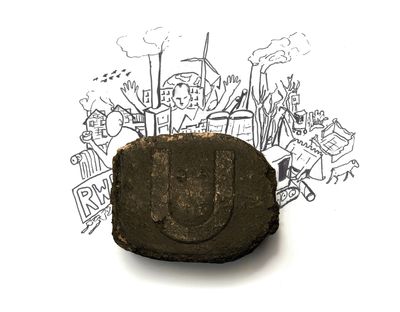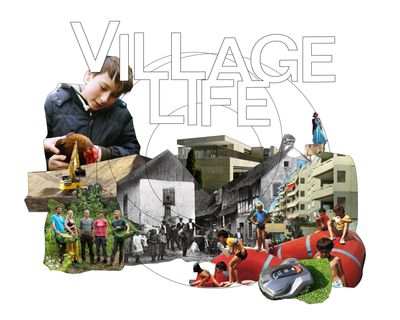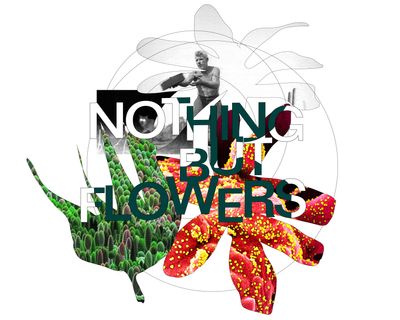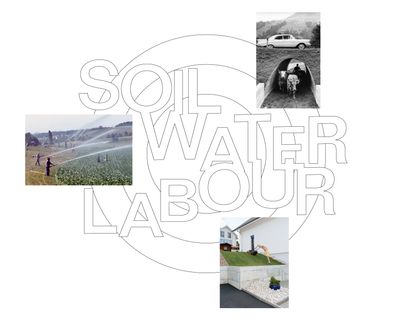Power to the People
Energy and Territory in the Rheinland
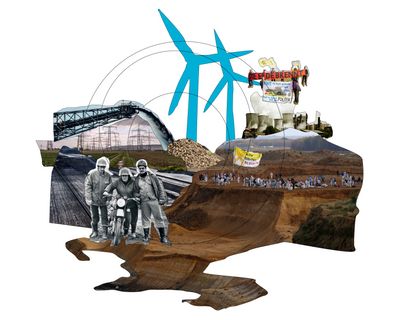
“The energy transition must be about new forms of collective commoning.” Ashley Dawson, 2020
Who owns and controls the energy we use? The energy crisis looming over Europe this fall as a consequence of the Ukraine war has made it clear that European geopolitics and power asymmetries have been built on fossil fuels. Yet the discussions around energy transition usually revolve around reducing carbon emissions through technofix solutions, without questioning the broader politics of energy. The promise of energy transition, that renewable energies could be decentral, ecological and above all democratic systems, is rarely explored. To understand the potentials of such transition, we need to approach energy as a vital agent producing the territory. Does energy production have to lead to ecosystem devastation and enhance social inequity, or can it unlock opportunities for a different future? Can architects and territorial designers envision and design a more democratic, equitable and ecological energy landscape?
There is probably no better place to understand energy and its impact on human life and environment than the Rheinland. Between Cologne and Aachen, the region also known as Rheinisches Revier, is an agro-industrial flatland, scarred through decades of coal mining, stripped of natural diversity and speckled with energy infrastructures, both fossil and renewable. High voltage power lines, power plants’ cooling towers, wind parks, huge bucket-wheel excavators, photovoltaic fields and biogas plants criss-cross the land and fill the horizon, creating an experience of a dehumanised territory. The need for energy, in particular coal, has massively altered this territory for already more than a century. Hambach, the region’s largest brown coal open pit mine, has a surface area of 85 square kilometres—equal to the city of Zurich. The volume of earth excavated every year in that mine equals four times the volume of earth moved to build the Panama Canal.
The energy industry penetrates the ground and affects every aspect of life. Entire villages have been razed, heritage landscapes lost, communities resettled, primary forests cut, roads relocated and rivers rerouted. The single main actor in charge is the energy corporation RWE. It has been criticised as top-down and profit-driven by climate activists and networks of resistance, which have formed in the region to struggle for greater democratic transparency and an ecological agenda by means of peaceful demonstrations and occupations of hamlets and infrastructures. In 2018, 50,000 people came together to celebrate the rescue of the Hambacher Forst that was saved from the expansion of the mine with the means of persistent activist protests.
Germany’s intended “coal exit”—Kohleausstieg—until 2038, will transform the Rheinland once again as mining operations are phased out in favour of landscapes of renewable energy and recreation. There is a danger herein that renewable energy farms will simply replace coal-fired power plants, while maintaining the same imperatives of increasing profits, growth and energy consumption that have characterised the production of coal (Dawson, 2020). With this mindset, we may be able to reduce carbon emissions, but the accompanying crises of increasing social polarisation, resource exhaustion and biodiversity loss will persist. Can we use the current momentum of energy transition to envision a meaningful change?
During the semester we will explore the Rheinische Revier to find out how energy production—from coal and gas to solar, wind and hydro—has formed this landscape in the past and present, and to learn from the precedents. Renewable energy has the potential to regenerate the social and the ecological fabric of territory. Can we imagine landscapes where energy is not a product, but a common good? Power to the people!
The seminar week is at the core of the project. After dedicated field exploration, students will be asked to write their own project briefs and develop analysis and projects for energy landscape. Experts will work with us on GIS cartography, videography, architectural writing, website design and more. Students will deliver their results in the form of a web-based investigative reportage, meant to inform design practices and the public discourse.
NEW ECOLOGIES
New Ecologies is a studio series at Architecture of Territory dedicated to ecologising architecture. Ecological thinking, which foregrounds the interactions between organisms (or by extension between objects, or social and technical systems) and their environments, is applied in considering design practises in their social and environmental effects. The studio series is affiliated with the Future Cities Laboratory and the ETH EPFL Master of Advanced Studies MAS UTD. Citizens, experts, fellow designers and artists will accompany us in the process.
PROCESS AND RESULTS
The semester consists of investigative journeys and intensive studio sessions. Architecture of Territory values intellectual curiosity, commitment and team spirit. We are looking for avid travellers and team workers, motivated to make strong and independent contributions. Our approach enables students to work with a range of methods and sources pertaining to territory, including ethnographic fieldwork, drawing techniques, writing, videography and online publishing. Experts and guests will help us on that journey. Students work in groups of two to three.
SEMINAR WEEK
An investigative journey constitutes the core of the project. The seminar week will be dedicated to exploring the manifold facets of energy landscapes in the Rheinische Revier. With our guides we will traverse the territory, visit mining pits, old and new forests and villages and speak with locals, experts, activists and pioneers of energy transition. The common days are followed by a period dedicated to fieldwork in respective student teams. The seminar week takes place from October 22–30 (cost frame B). It is integrated, mandatory, and open to all interested students.
LECTURE SERIES: MY ENERGY
Within the lecture series running in alignment with the studio, four guest speakers engaged in fields ranging from energy humanities and feminist political ecology, to urban history and urban design, will approach the notions such as energy transition, decarbonisation, genealogy of energy, and urban microclimates.
CREDITS
The semester offers a total of 19 credit points. The Design Studio 14 credits, the Integrated Discipline (Planning) 3 credits and the Seminar Week 2 credits.
